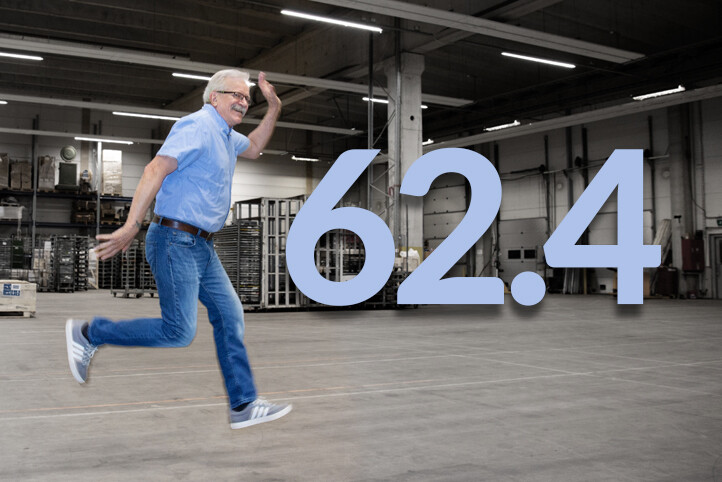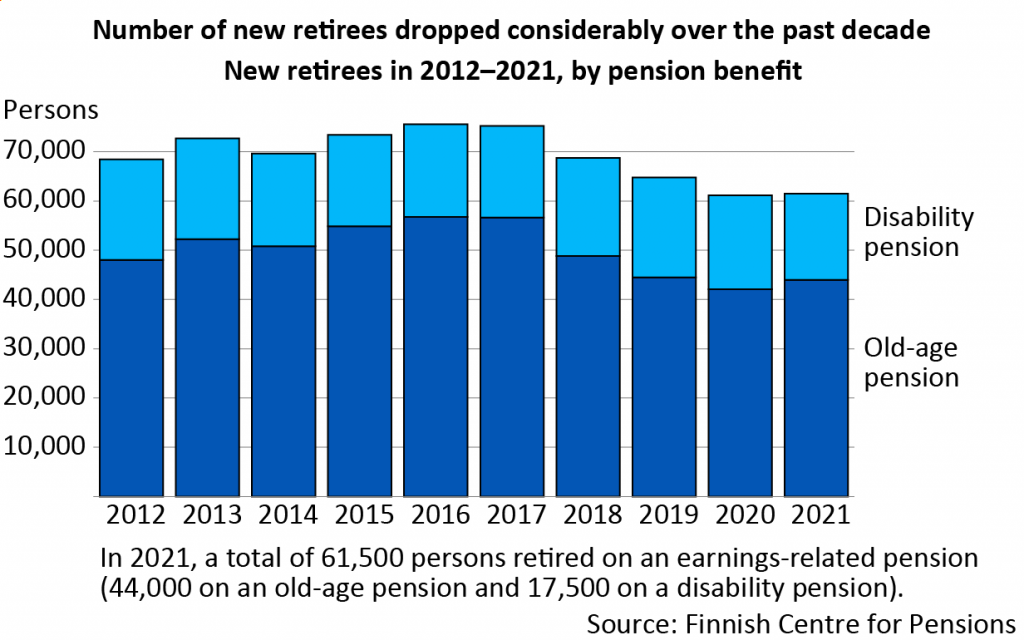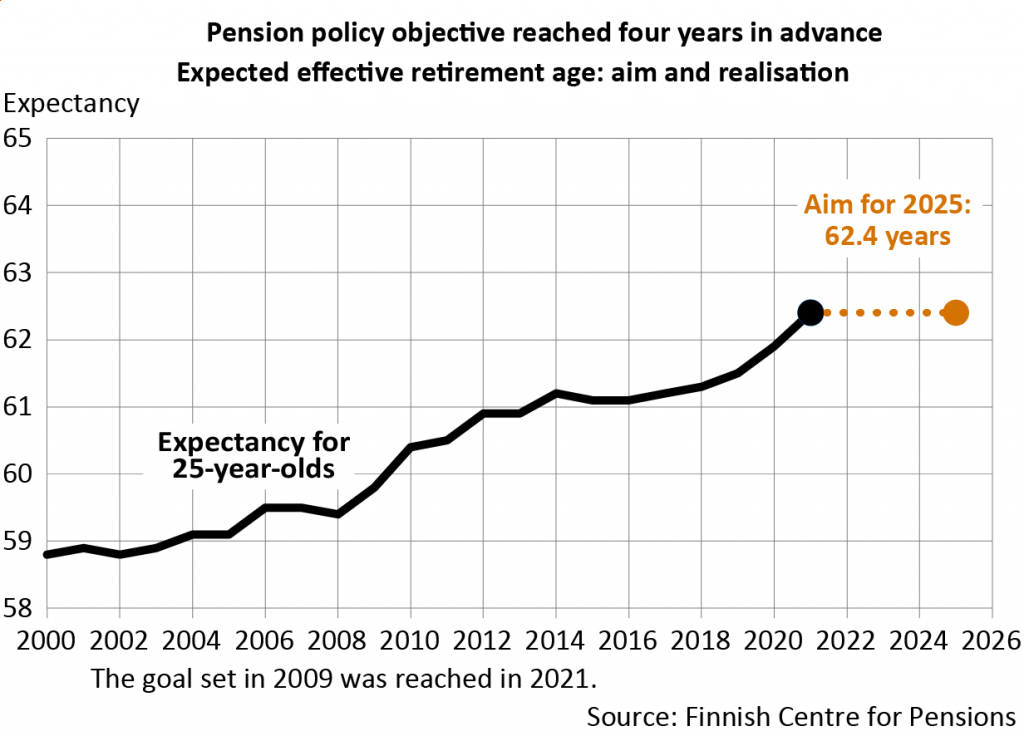Effective retirement age on the rise for the second year in a row

In 2021, the Finns retired on an earnings-related pension six months later than in 2020. The average effective retirement age was 62.4 years. Half of this increase can be explained by the rising retirement age and half by the surprisingly big drop in the number of new retirees on a disability pension.
The effective retirement age has risen exceptionally much during the two years of the corona pandemic. In 2020, it rose by five months, and in 2021, by as much as six months.
In 2021, the expected effective retirement age was 62.4 years, five tenths higher than in 2020.
“In recent years, the effective retirement age has risen particularly thanks to the 2017 pension reform. As the number of new retirees on a disability pension also declined, the effective retirement age rose more than ever in 2021,” explains development manager Jari Kannisto (Finnish Centre for Pensions).
Number of retirees on a disability pension record low
Half of the trend in 2021 is explained by the rising retirement age agreed on in the 2017 pension reform.
The other half is a result of the unexpected decline in the number of new retirees on a disability pension. In 2021, roughly 17,500 persons retired on a disability pension, down by 1,600 persons (more than 8%) from 2020.
The number of new retirees on a disability pension is the lowest ever observed. Time will show whether this positive trend is permanent or only a result of the exceptional coronal pandemic.
“It is unlikely that the health of the Finnish population has improved this much during the corona pandemic. Instead, the care debt is likely to have increased since people have avoided seeing a doctor during the pandemic. It is most likely that the number of disability pension recipients will rise after the pandemic”, says Kannisto.

Rising employment rate among the older population despite the pandemic
In 2021, the employment rate of the older population (60–64-year-olds) rose by half a percentage point to 56.9 per cent.
The employment rate among the elderly has increased rapidly in the 2000s. At the beginning of the century, the employment rate was half of the current rate. Particularly the rising retirement age agreed on in the 2017 pension reform has extended working lives and improved the employment rate in recent years.
“Working lives have clearly lengthened. Since the reform, the employment rate of the 60–64-year-olds has improved by nearly 10 percentage points. Last year it was record high,” Kannisto explains.
Expected effective retirement age: 62.4 years
- depicts the average retirement age if the retirement contingencies and the mortality rates remain on the level of the review year;
- is independent of the demographic age structure and calculated following the same principle as when calculating the expected life expectancy that measures the life span; and
- indicates the development of the effective retirement age.
Three facts about retirement on earnings-related pension in 2021
- 61,500 persons retired on an earnings-related pension
- 44,000 persons retired on an old-age pension (up by 2,000 persons)
- 17,500 persons retired on a disability pension (down by 1,600 persons)

- The objective was set at the negotiations between the government and labour market organisations in 2009 and confirmed in connection with the 2017 pension reform.
- Abolishing the unemployment pension and the reduced number of starting disability pensions has raised the effective retirement age. In the future, the rising retirement age will also raise the effective retirement age.
- The effective retirement age has increased exceptionally much during the corona pandemic. The development may slow down and take a downward turn after the pandemic.
Photo: Katri Lehtola
